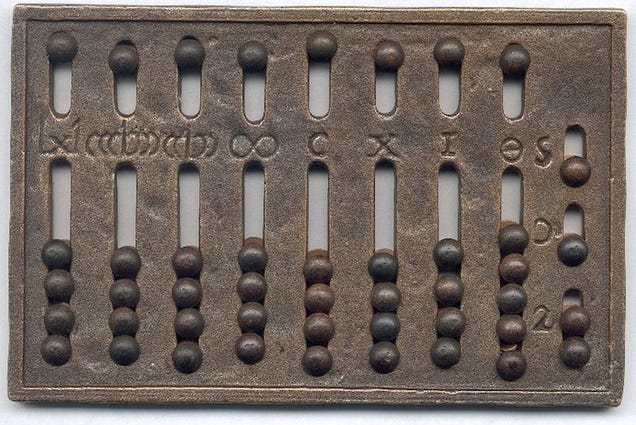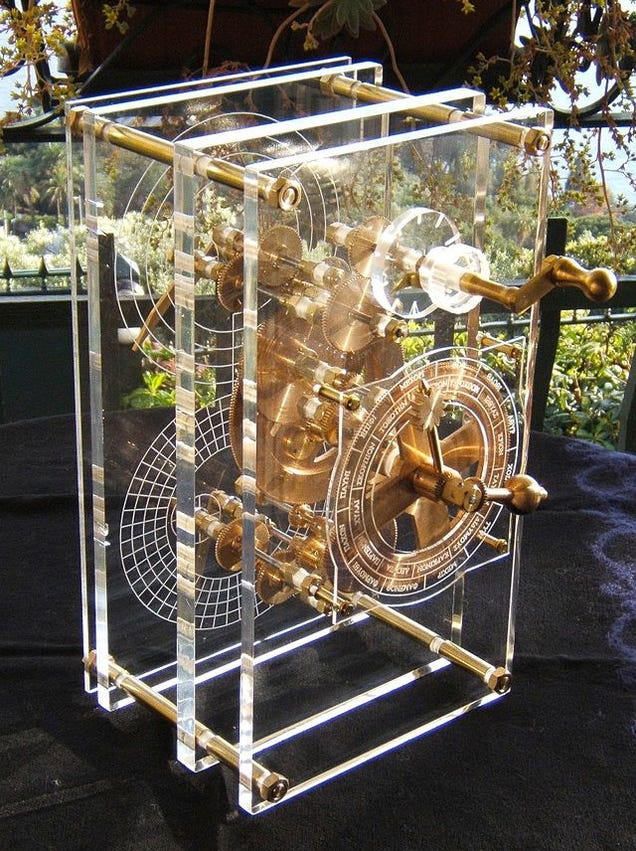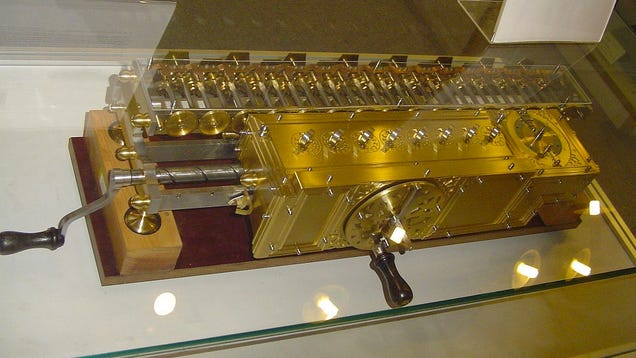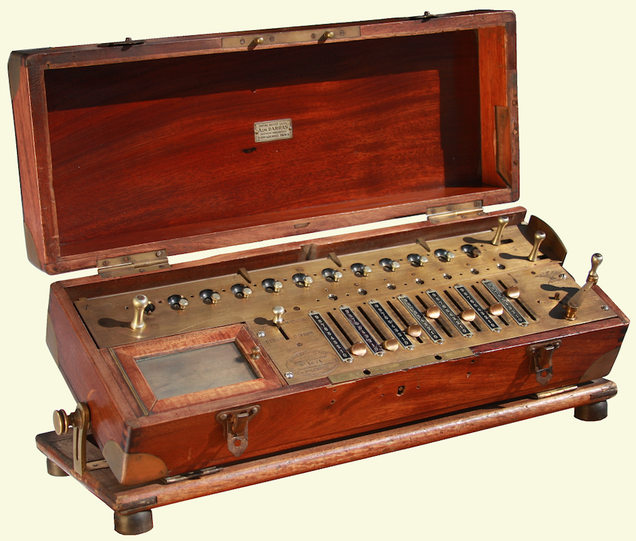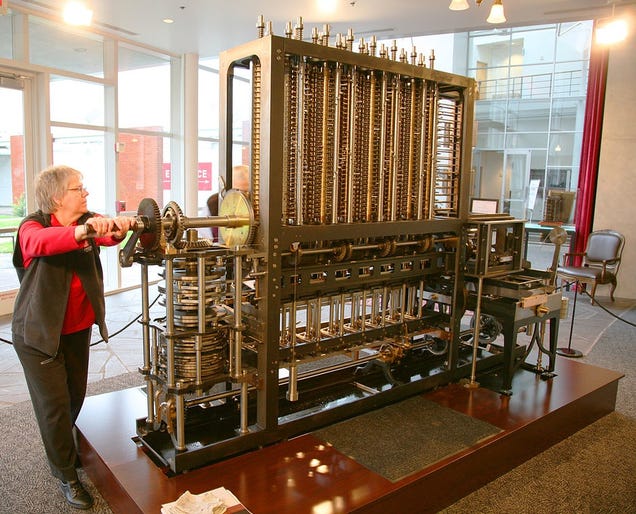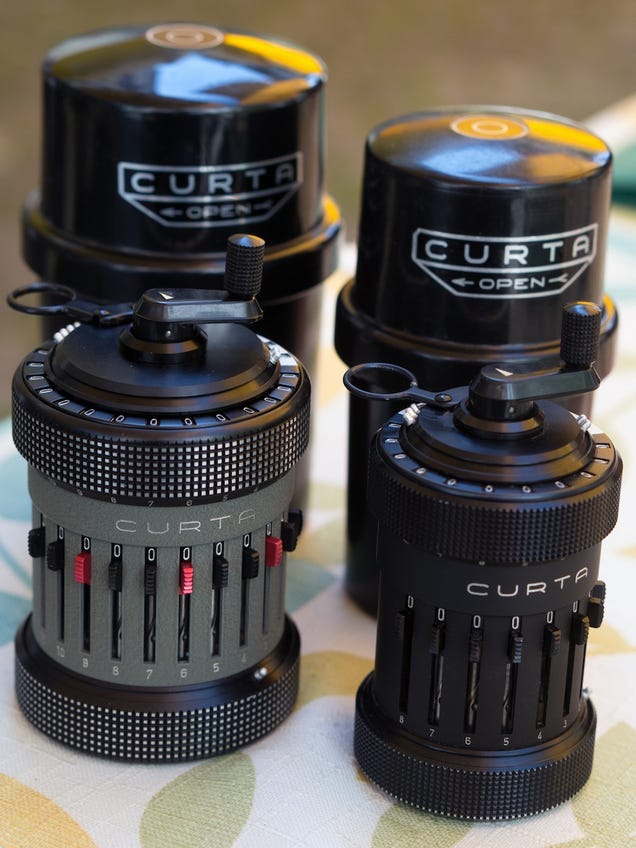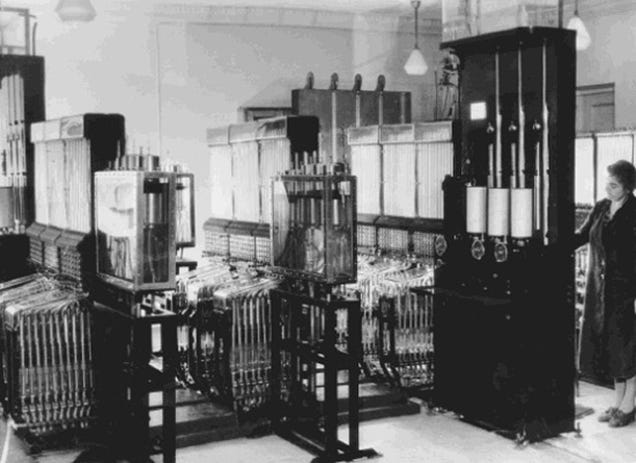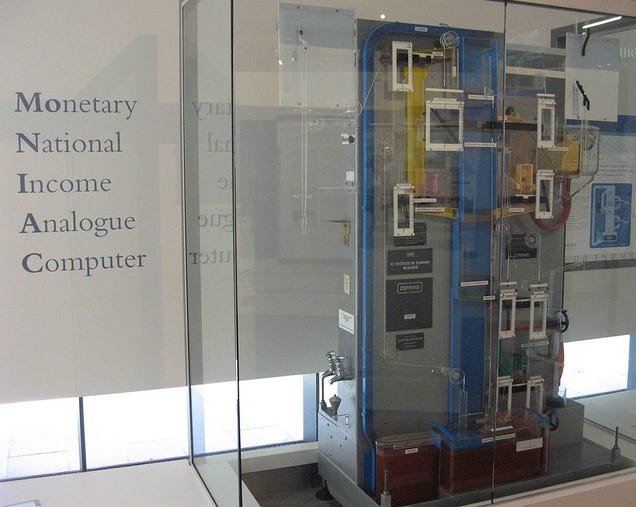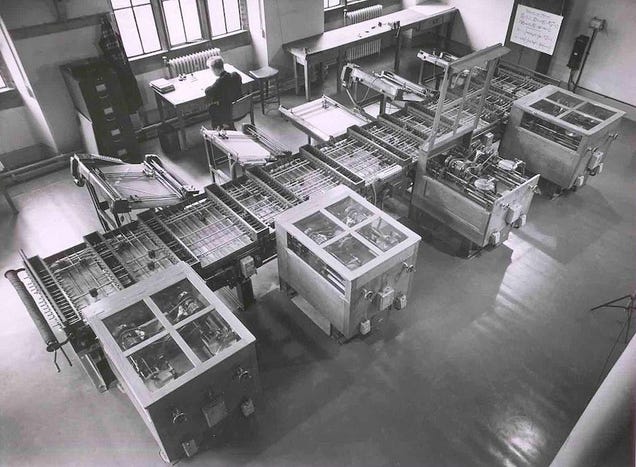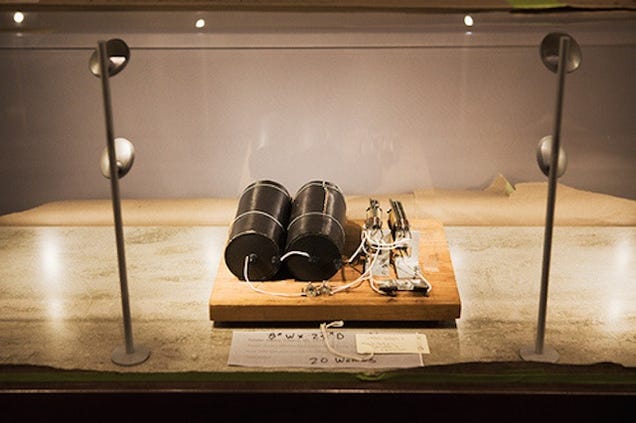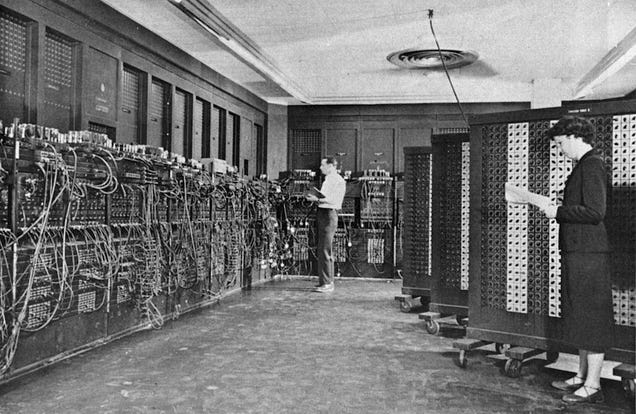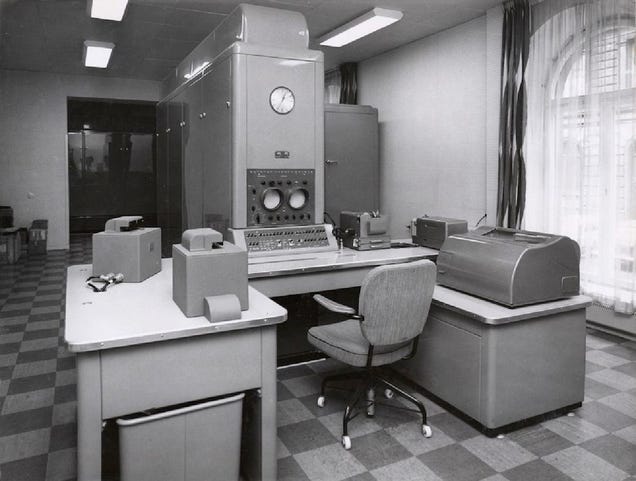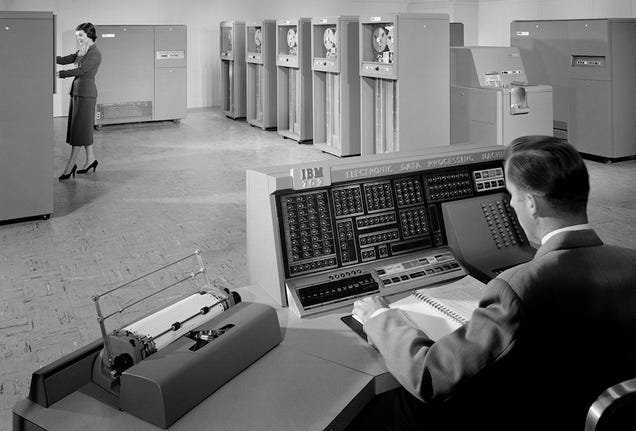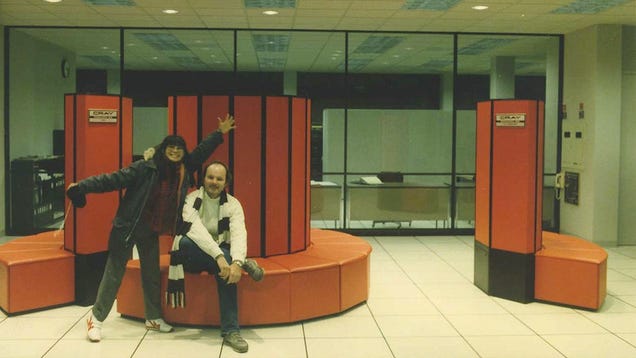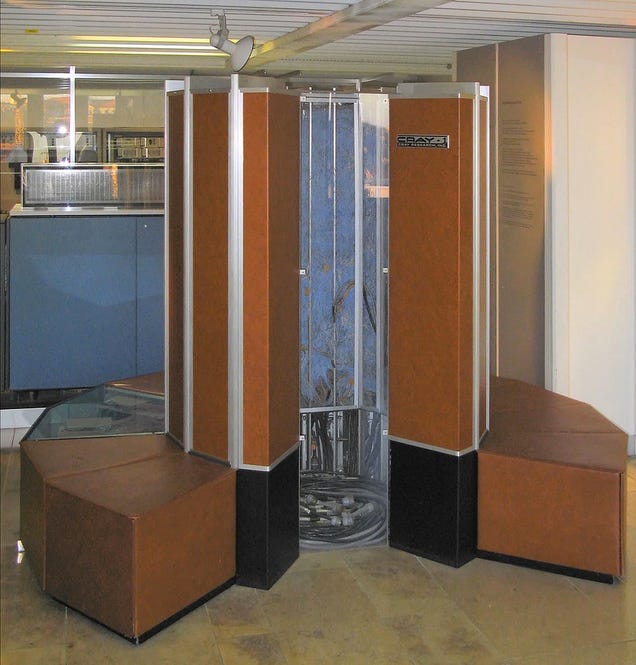Early Computing Machines
The Chinese Abacus 'Suan Pan' and the Roman Abacus

(via History-Computer and David R. Tribble)
The Antikythera mechanism, designed to calculate astronomical positions (early 1st century BCE)

The Pascaline or Pascal's Calculator, by Blaise Pascal. It could add, subtract, multiply and divide two numbers (1642)
The Stepped Reckoner, invented by Gottfried Wilhelm Leibniz, completed in 1694. Two prototypes were built, only one survived.
The Arithmométre, the first mass-produced mechanical calculator, by Charles Xavier Thomas de Colmar, based on Leibniz's work, around 1820, but manufactured until 1915
The punched card system, developed by 1801 by Joseph-Marie Jacquard. Used in music machines, mechanical organs, calculators, mechanical counters, looms, and other automatons and early computers.
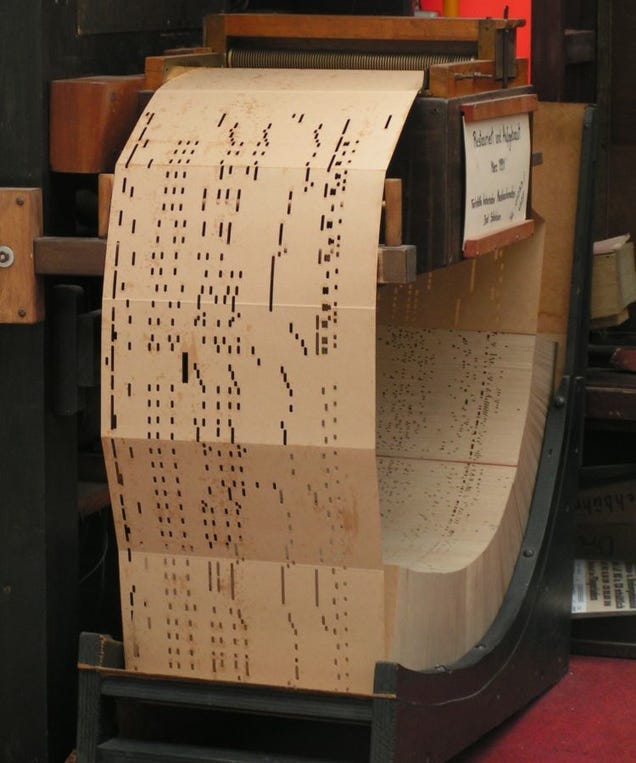
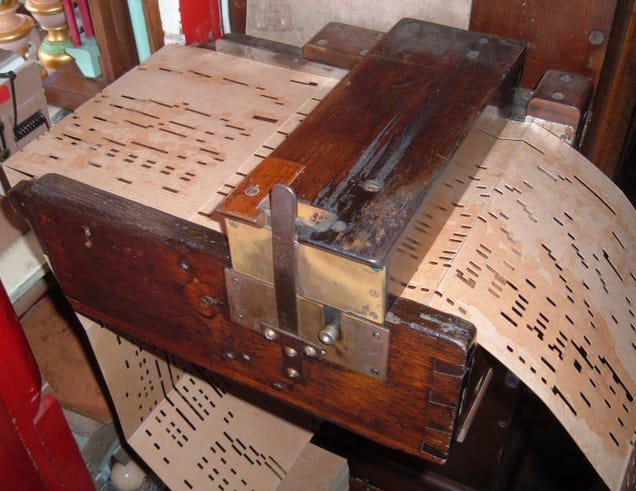
The Difference engines, the first mechanical computers, by Charles Babbage in the early 1800s
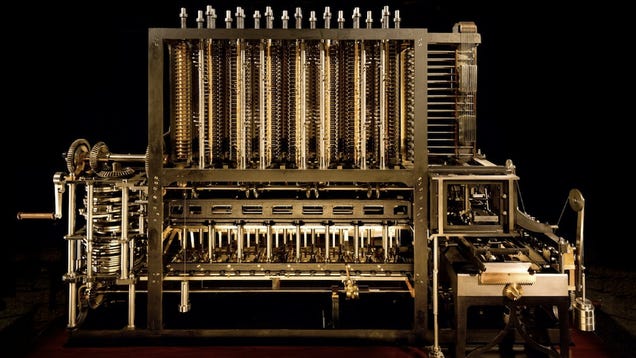
The hand-cranked calculator Curta, invented by Curt Herzstark in 1948. Type II was introduced in 1954 and produced until 1972.
The Water Integrator, that could solve (partial) differential equations, built by Vladimir Lukyanov, 1936
The water
levels in the chambers represented stored numbers, and the rate of flow
between them represented the mathematical operations.
The Mallock Machine, built by Rawlyn Richard Manconchy Mallock of Cambridge University to solve simultaneous linear differential equations (1933)
(via University of Cambridge)
The MONIAC or the Philips Hydraulic Computer, developed by Bill Philips to model the economic processes of the UK (1949)
Each
transparent tank represented an aspect of the UK national economy and
the flowing colored water symbolized the flow of money.
Differential analyzers of the 1930s and 1940s
Cambridge, 1938
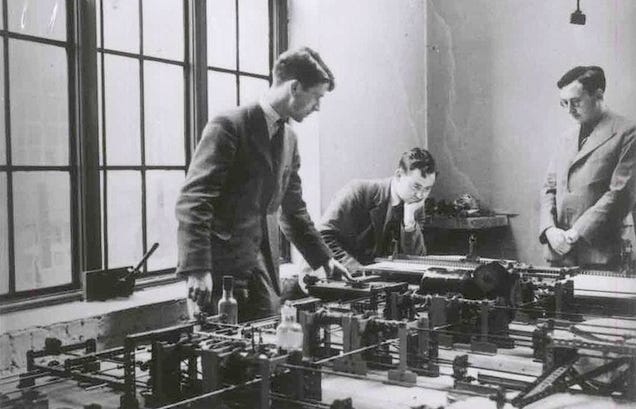
Cambridge, c. 1937
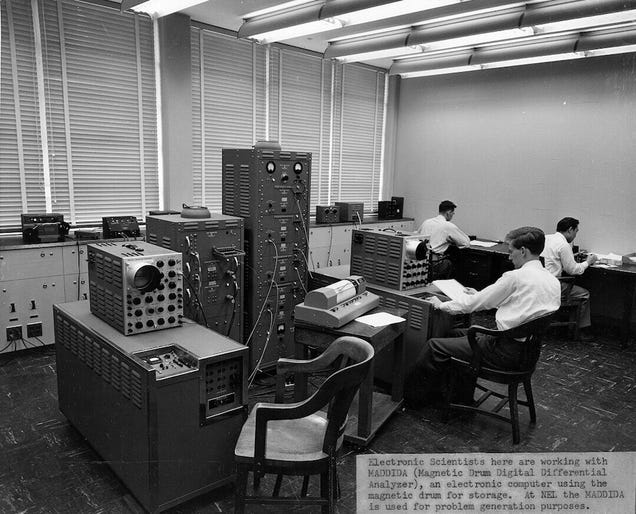
Magnetic Drum Digital Differential Analyzer at the Navy Electronics Laboratory
Model K, the first electric digital computer by George Robert Stibitz at Bell Laboratories (1937)
Stibitz made this machine from scrapped relays on his kitchen table at home. It could add two binary digits.
The Z1, the first freely programmable computer, which used Boolean logic and binary floating point numbers, built by Konrad Use between 1936 and 1938
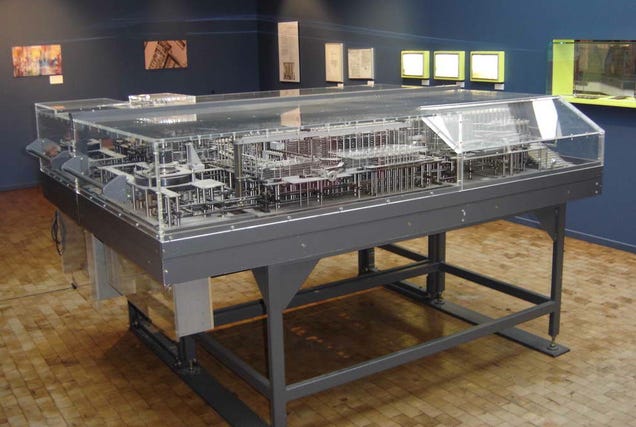
It never
worked flawlessly due to problems with the precision of its parts. The
Z1 was destroyed by the Allied air raids in 1943, but Zuse rebuilt it in
the mid-1980s.
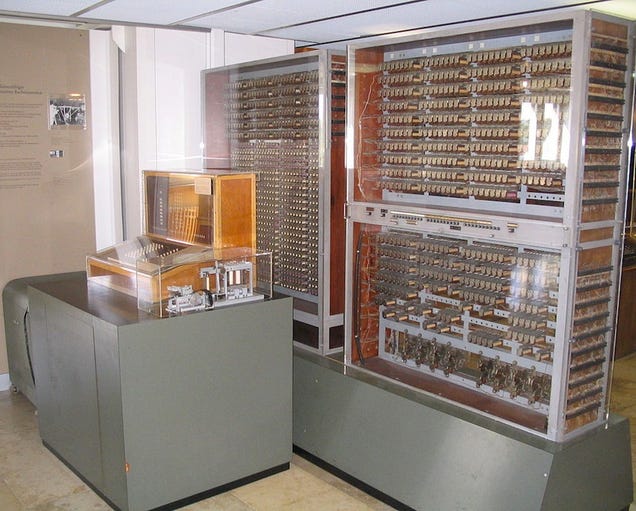
The
engineer's later machine, the Z3 (1941) was the first working
program-controlled digital computer, used to perform statistical
analyses of wing flutter.
(via ComputerGeek and Teslaton)
Colossus, the British codebreaker computer of WWII, developed by Tommy Flowers (Type I: 1943, Type II: 1944)
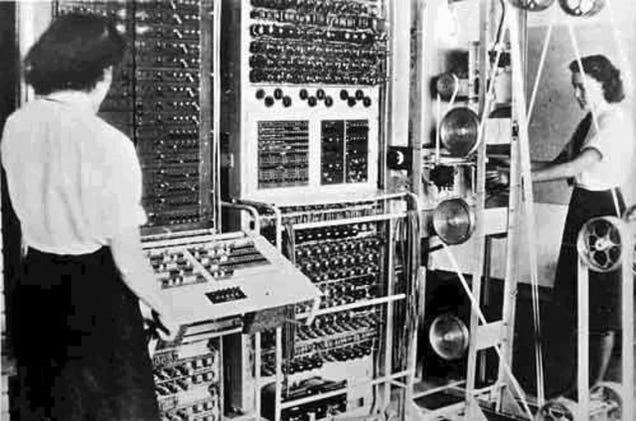
The 10
units were smashed to pieces and blueprints were burnt after WWII, but a
working replica has been built between 1994 and 2006, and is on display
at The National Museum of Computing.
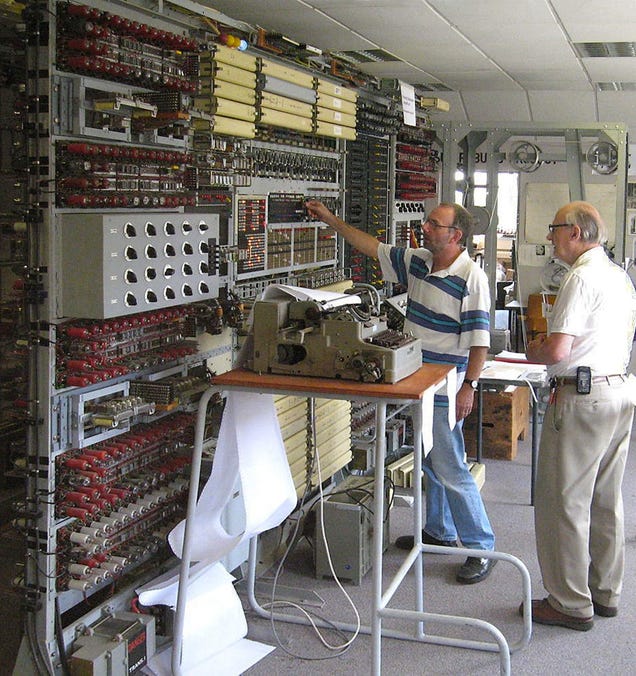
ENIAC – Electronic Numerical Integrator And Computer, the first electronic general-purpose computer, designed by John Mauchly and J. Presper Eckert, announced in 1946
At first
the computer worked until November 9, 1946, and after a memory upgrade
and a refurbishment the ENIAC was turned on again for eight more years.

(via Wikimedia Commons)
The world's first stored-program computer, the Manchester Small-Scale Experimental Machine (SSEM) or Baby, built at the Victoria University of Manchester by Frederic C. Williams, Geoff Tootill and Tom Kilburn (1946)
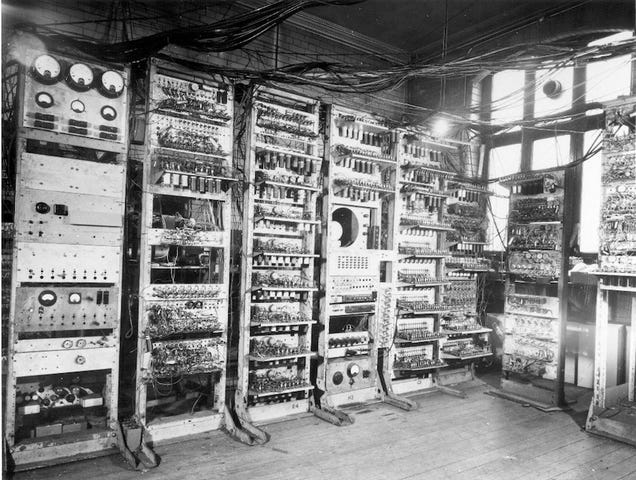

Ferranti Pegasus 1 (1956) and Pegasus 2 (1959) by the British Ferranti Ltd.
Twenty-six
were sold of the vacuum tube computer Pegasus 1 and twelve of the
Pegasus 2. A Pegasus 1 was used to calculate 7480 digits of pi, a record
of its time.
The first computer to play digital music, the CSIRAC, by an Australian team led by Trevor Pearcey and Maston Beard (1949)
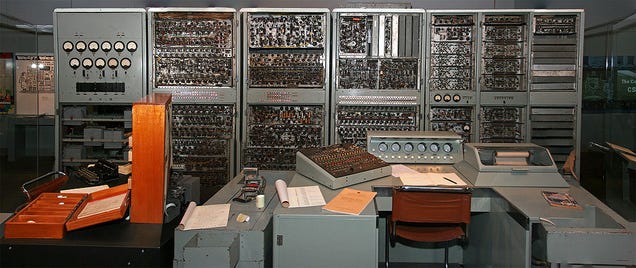
The commercial computer UNIVAC I, designed by John Mauchly and J. Presper Eckert, the inventors of ENIAC (1951)
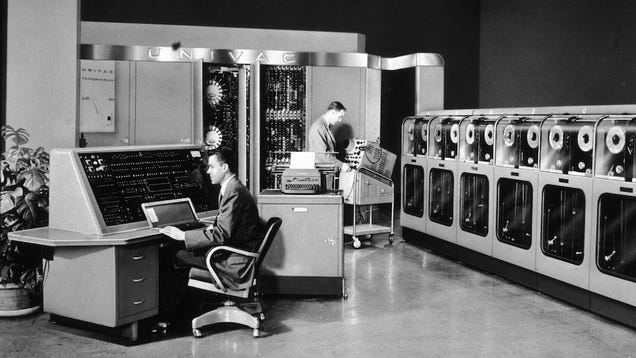
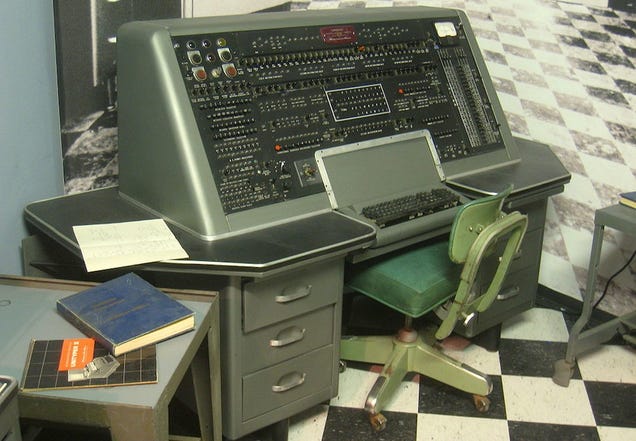
The IBM's answer to the UNIVAC: the IBM 702, the first computer to use magnetic tapes, announced in 1953
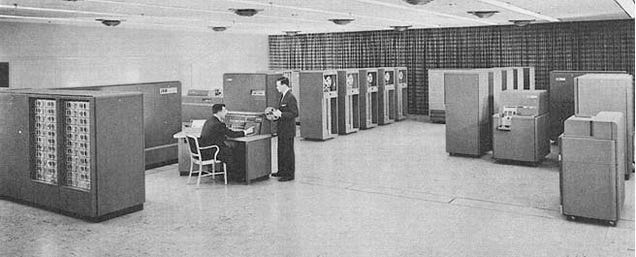
The first mass-produced computer ever, the IBM 650 (1953-1969)
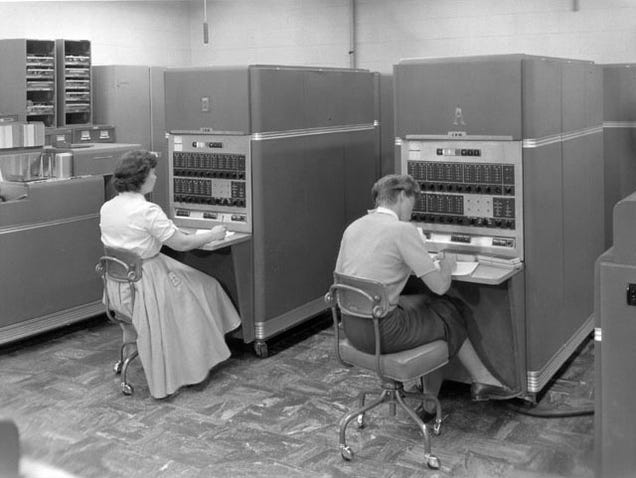
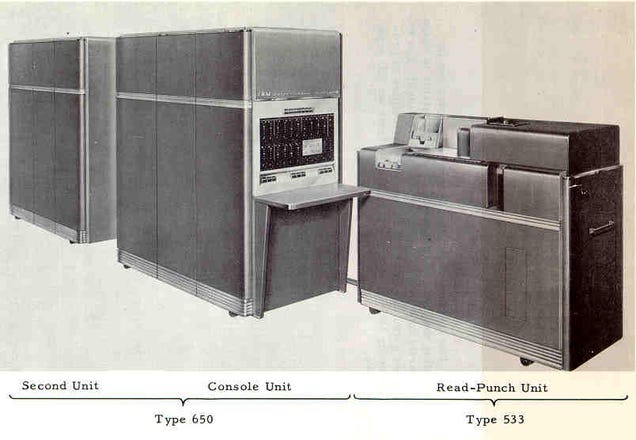
More than 2000 were built.
SAGE (Semi-Automatic Ground Enviroment), designed for the Air Force to track radar data in real time (1954)
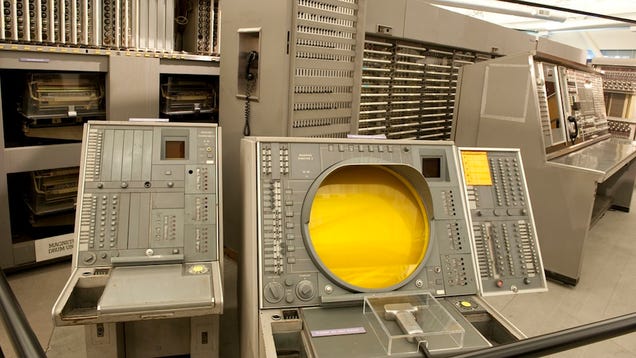
Built by the IBM to the US Air Force to analyze radar signals in North American airspace in response to the threat from Soviets.

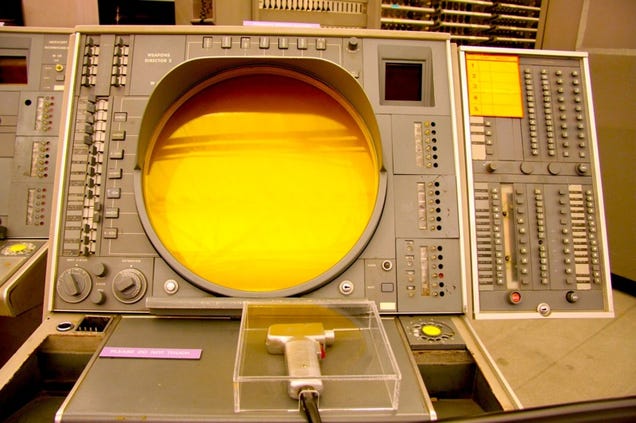
NEAC 2203, by the Nippon Electric Company (1960)

IBM System/360 (1964)
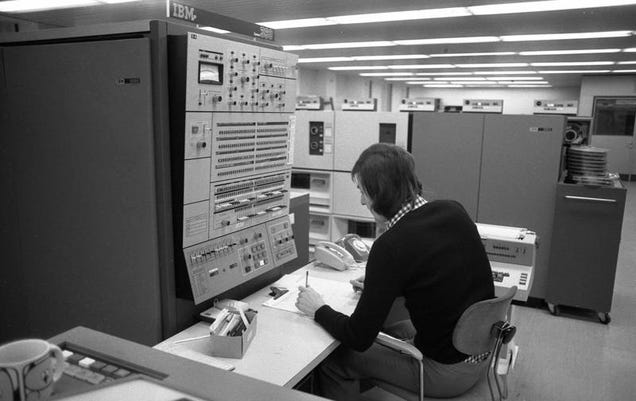
The first
computer mainframe that could complete a range of applications from
scientific to commercial. 360s were used by the NASA during the Apollo
missions and some airports used these as air traffic control computers.
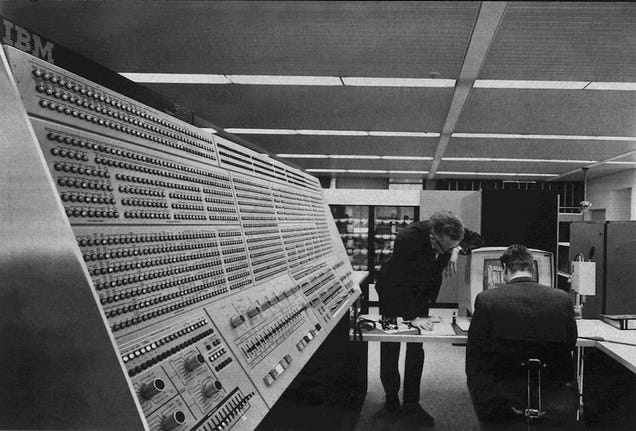

Cray-1, the best known supercomputer ever, deisgned by Cray Research, led by Seymour Cray and Lester Davis (1976)
Apple I by Steve Wozniak (1976)

IBM Personal Computer or Model 5150, created by a team of engineers and designers led by Don Estridge (1981)
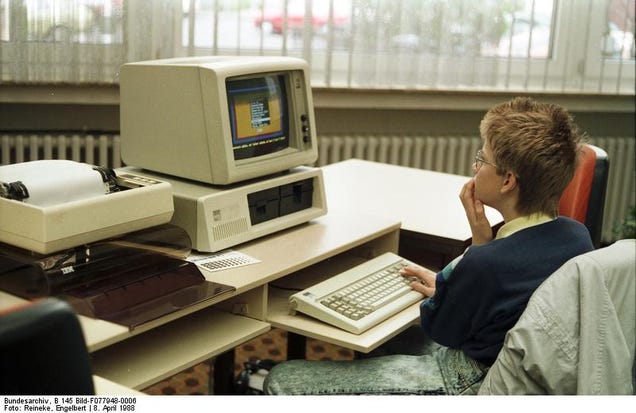
The system that made computers mainstream.





